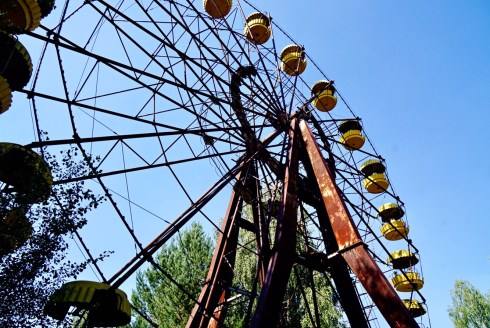I’ve been fascinated with Chernobyl for at least the last 10 years. Up until a few years ago, only occasional photos showed up online, and those were usually by professional journalists and photographers on assignment.
Thanks to Instagram and a handful of organized tour groups, the photos now flow freely, and I really wanted to get in while the structures remained somewhat intact. When I decided to quit my job to spend the year traveling, I began with Eastern Europe and Chernobyl to ensure I got a glimpse before the winter snows.


After the hospital, we ventured deeper into Pripyat and visited the grand auditorium. The remnants of the May Day preparations still remain. The party never happened, as time in Pripyat stopped on April 26, 1986, when reactor #4 exploded, causing the world’s worst nuclear disaster.

In the elementary school, we were told the children went to school as normal the day after the disaster. That’s because officials kept the explosion secret for three days. It was likely the Swedes who forced Soviet hands in revealing the accident after the neighbors far north detected radioactive clouds spreading across all of Europe.

It’s a rewarding but emotionally difficult experience. The tour was an equal mix of history, global context and photo walk, which gave us much-needed perspective and kept the trip from being gratuitous ruin porn.


I couldn’t resist the opportunity to touch, though sitting on the ground and objects is highly discouraged, as radiation collects on surfaces. Thankfully, I passed the radiation check.

We also met Ivan Ivanovich, one of the less than 100 remaining self-settlers who returned to the exclusion zone shortly after the disaster and exists on mostly self-grown crops, a few chickens, and the occasional pig. Our group brought him a bag of groceries from the small Chernobyl town commissary that serves as a tiny grocery store for the workers in the zone.


